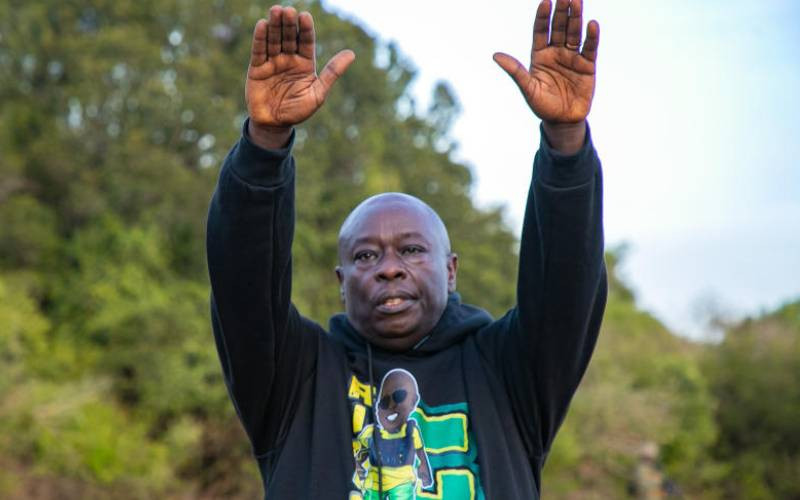By GATONYE GATHURA
Many drugs in the local health sector, even for most common diseases like pneumonia and diarrhoea, are no longer working, according to the World Health Organisation (WHO).
Based on data provided by the Government, other health networks and some 113 member countries, WHO says we have come to the end of working antibiotics for previously simple to treat diseases.
The organisation says half of patients with some types of pneumonia, the second killer-disease in Kenya, are not getting cured because commonly available medicines are no longer effective.
But even more worrying, some private hospitals in Nairobi say common medicines for treating childhood diarrhoea are only effective in 13 out of 100 patients.
Only half of patients who get infected by a common hospital acquired bacteria that is life threatening to newborns and intensive-care unit patients is currently responding to the last line medication.
Medical crisis
In the first global report on antibiotics resistance released on Wednesday, covering 114 countries including Kenya, WHO says the world is facing a medical crisis never seen before.
“A post-antibiotic era, in which common infections and minor injuries can kill – far from being an apocalyptic fantasy, is an unfolding reality,” said Dr Keiji Fukuda of WHO while releasing the report.
The organisation says what is evolving is worse than Aids since it will mean more deaths from simple cuts, grazes, diahrroea and even flu because common drugs have lost the power to fight these minor infections.
In Kenya, for example, the report shows the bacterium E.coli, which causes diarrhoea, kidney failure and anaemia, is hardly treatable with the common class of drugs called cephalosporins. Now physicians are forced to use a more expensive class of medicines – carbapenems – which are not available in most local hospitals. The drugs are the last line of defence.
“Of great concern is the fact that some types of pneumonia have developed resistance to this last resort medicine, which means these patients are most likely going die,” says WHO.
The other worry is the emergence of a type of gonorrhoea resistant to the last line of medicines.
Last year, the Kenya Medical Research Institute (Kemri) warned of the emergency of drug resistant gonorrhoea and issued new treatment guidelines involving a cocktail of tablets and injections.
This strain, then known as multi-drug resistance gonorrhoea, has been overtaken by a much more dangerous form that, in the new report, WHO is calling extensively drug-resistant gonorrhoea.
Stay informed. Subscribe to our newsletter
Dr Fukuda explains that people with what used to be regarded as simple medical conditions will now be staying longer in hospitals with lower chance of survival. Also treatment will become more expensive for both individuals and the health care systems.
“For example, people with the drug resistant bacterium called S.aureus are 64 per cent more likely to die than people with a non-resistant form of the infection.”
Called MRSA it can be fatal in most cases causing blood poisoning, pneumonia and even heart failure. In February a team from Kemri led by Dr E K Maina found MRSA to be a major cause of hospital visits in Nairobi.
Samples collected from several public hospitals then, had been found to be resistant to five types of the commonly available medicines in the country.
Other medicines that are also losing their effectiveness are for treating malaria, meningitis and HIV. Earlier, the National AIDS and STI Control Programme had published data indicating a new drug resistant HIV strain that was widespread in Nairobi County.
“There is need to prevent infections from happening in the first place–through better hygiene, access to clean water, infection control in health-care facilities, and vaccination,” says Dr Fukuda.
 The Standard Group Plc is a
multi-media organization with investments in media platforms spanning newspaper
print operations, television, radio broadcasting, digital and online services. The
Standard Group is recognized as a leading multi-media house in Kenya with a key
influence in matters of national and international interest.
The Standard Group Plc is a
multi-media organization with investments in media platforms spanning newspaper
print operations, television, radio broadcasting, digital and online services. The
Standard Group is recognized as a leading multi-media house in Kenya with a key
influence in matters of national and international interest.
 The Standard Group Plc is a
multi-media organization with investments in media platforms spanning newspaper
print operations, television, radio broadcasting, digital and online services. The
Standard Group is recognized as a leading multi-media house in Kenya with a key
influence in matters of national and international interest.
The Standard Group Plc is a
multi-media organization with investments in media platforms spanning newspaper
print operations, television, radio broadcasting, digital and online services. The
Standard Group is recognized as a leading multi-media house in Kenya with a key
influence in matters of national and international interest.









